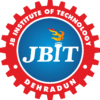COMPOSITION
The Committee shall consist of the following members:
- Head of the Institution: As the institution’s leader, the Head plays a pivotal role in setting the tone and direction for the committee’s activities. They provide guidance, support, and resources necessary for the committee’s effective functioning. Additionally, they ensure that the committee’s decisions align with the institution’s values and policies.
- Representatives of Civil and Police Administration: These representatives bring legal expertise and enforcement authority to the committee. They assist in interpreting relevant laws and regulations related to ragging and coordinate with law enforcement agencies to investigate and prosecute serious cases. Their presence also serves as a deterrent to potential perpetrators.
- Local Media Representatives: Media representatives contribute to the committee by disseminating information about the institution’s anti-ragging initiatives and promoting awareness campaigns. They also serve as a channel for reporting incidents anonymously, thereby encouraging victims to come forward and seek assistance without fear of reprisal.
- NGOs involved in youth activities: These organizations offer specialized knowledge and resources for addressing the underlying causes of ragging, such as peer pressure, mental health issues, and socialization challenges. They collaborate with the committee to develop preventive measures, conduct awareness workshops, and provide counseling and support services to affected students.
- Representatives of Faculty Members: Faculty representatives provide valuable insights into the academic environment and student-teacher dynamics. They help identify potential risk factors for ragging within the curriculum or classroom settings and work to integrate anti-ragging education into the academic curriculum. They also play a key role in identifying and reporting incidents of ragging to the committee.
- Representatives of Parents: Parent representatives advocate for the safety and well-being of students within the institution. They act as a liaison between the committee and the broader parent community, raising awareness about anti-ragging policies and encouraging parental involvement in prevention efforts. They also provide support to victims and their families during the resolution process.
- Representatives of Freshers’ Category Students: Freshers’ representatives offer firsthand perspectives on the challenges and experiences faced by new students. They participate in awareness campaigns targeted at freshmen, facilitate orientation programs to promote positive peer interactions, and advocate for including anti-ragging policies in student orientation materials.
- Representatives of Senior Students: Senior student representatives serve as role models and mentors for incoming freshmen. They promote a culture of respect, empathy, and inclusivity among students through peer-led initiatives and awareness campaigns. They also assist the committee in identifying and addressing systemic issues contributing to raging incidents among senior students.
- Non-Teaching Staff Representatives: Non-teaching staff members contribute to the committee by providing logistical support, maintaining records of reported incidents, and assisting with implementing preventive measures. They also serve as trusted contact points for students seeking assistance or discreetly reporting raging incidents.
- Diverse Mix of Membership in Terms of Level and Gender: Ensuring diversity in terms of level and gender enhances the committee’s ability to represent the interests and perspectives of all stakeholders within the institution. It promotes inclusivity, fosters collaborative decision-making, and strengthens the committee’s credibility and effectiveness in addressing ragging incidents.
By leveraging the expertise and resources of these diverse stakeholders, the Anti-Ragging Committee can develop holistic strategies and interventions to create a safe, supportive, and inclusive learning environment for all students.
Anti- Ragging Committee for AY 2023-24
S.No. | Committee Members | Designation | Nomination | Mobile No. | E-mail Id |
1. | Dr. P. K. Chaudhary | Director | Chairman | 8449199990 | pk.chaudhary@jbitdoon.edu.in |
2. | Dr. Vishant Kumar | Registrar | Member | 8077533609 | registrar@jbitdoon.edu.in |
3. | Mr. Girish Negi | SHO Thana Sahaspur | Member | 9411112816 | sho.sahaspur@gmail.com |
4. | Mr. Suresh Sharma | Media Person | Member | 9027744071 | sharma.suresh3003@gmail.com |
5. | Mr. Deepak Dobhal | President (NGO) | Member | 8755230936 | himsikhar.paudi@gmail.com |
6. | Dr. Sanjeev Gill | HOD (CIVIL) | Member | 7895956363 | hod.civil@jbitdoon.edu.in |
7. | Dr. Sandeep Kr. Chaudhary | Coordinator (IQAC) | Member | 9927016204 | dr.sandeep.chaudhary@jbitdoon.edu.in |
8. | Dr. Neeraj Kumar | HOD (Applied Science) | Member | 8193991991 | neeraj.kumar@jbitdoon.edu.in |
9. | Mr. Manoj Kr. Chaudhary | HOD (CSE) | Member | 8630752378 | hod.cse@jbitdoon.edu.in |
10. | Mr. Lakhan Singh | HOD (EE) | Member | 9411800239 | hod.ee@jbitdoon.edu.in |
11. | Dr. Swati Tripathi | Assistant Professor (EE) | Member | 7895309667 | swati.tripathi@jbitdoon.edu.in |
12. | Ms. Manisha Dhoundiyal | Admin | Member | 8449199955 | manisha.joshi@jbitdoon.edu.in |
13. | Mr. Sushil Kr. Singh | Warden | Member | 9761750248 | sushilkumar365@gmail.com |
14. | Ms. Rupa Sharma | Warden | Member | 8449199995 | rupa.sharma@jbitdoon.edu.in |
15. | Mr. Jeevan Lal Arya | Parent | Member | 9756467628 | arya.jeevan65@gmail.com |
16. | Mr. Utsav Jha | Student | Member | 9810815434 | utsav.jha@jbitdoon.edu.in |
17. | Ms. Avnisha Naugain | Student | Member | 7668241386 | avnisha.naugain@jbitdoon.edu.in |
18. | Ms. Jaanhvi Srivastava | Student | Member | 9026906468 | jaanhvi.srivastava@jbitdoon.edu.in |
19. | Mr. Devendra Kumar Patel | Student | Member | 7456906558 | devendra.kumar.patel@jbitdoon.edu.in |

